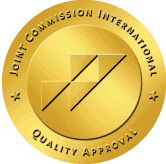If alcoholism runs in your family, you’ve probably wondered whether your genes sealed your fate or if you’re in control of your destiny. The question haunts many people who’ve watched relatives struggle with alcohol use disorder, leaving them searching for answers about their own vulnerability.
Research reveals that 45-65% of alcoholism liability stems from genetic factors, according to twin studies conducted across the US and Europe. Your DNA doesn’t just influence your eye color or height—it shapes how your brain responds to alcohol, affecting everything from your tolerance levels to withdrawal sensitivity. Scientists have even identified specific brain wave patterns that reflect genetic variations in alcohol response.
But, genetics tells only part of your story. While you can’t change the genes you inherited, environmental factors like childhood experiences, stress levels, and social influences play equally crucial roles in determining whether you’ll develop alcohol use disorder. Understanding this genetic-environmental interplay empowers you to make informed decisions about your relationship with alcohol.
Understanding Alcoholism and Genetics
Alcoholism and genetics share a complex relationship that scientists have studied extensively over the past four decades. Research consistently shows that genetic factors contribute significantly to your risk of developing alcohol use disorder, though they don’t determine your destiny.
The Genetic Component of Alcohol Addiction
Twin studies conducted across the United States and Europe reveal that approximately 45-65% of your liability for developing alcoholism stems from genetic factors. This substantial percentage means that if you have family members with alcohol use disorder, your genetic background may contribute significantly to alcohol dependency risk.
Children of people with alcohol use disorder face a 2-6 times higher likelihood of developing alcohol problems compared to the general population. Adoption studies provide compelling evidence for genetic transmission – biological sons of alcoholics who were adopted by non-related families showed four times greater risk of becoming alcoholics than adopted sons of non-alcoholics.
Genetic Mechanisms in Alcohol Response
Your genes influence multiple aspects of how your body processes and responds to alcohol:
Alcohol metabolism – Specific genetic variants affect how quickly your body breaks down alcohol, influencing your tolerance levels and withdrawal sensitivity
Brain response patterns – Researchers have identified reduced brain wave amplitude called P300 that reflects underlying genetic variations in your brain’s response to alcohol
Physical sensitivity – Genetic factors determine your sensitivity to alcohol’s intoxicating and sedative effects
Environmental Factors and Gene Expression
While genetic predisposition plays a major role, environmental factors significantly influence whether these genes become activated. Your upbringing, social influences, stress levels, and personal choices all interact with your genetic makeup.
A 2021 study demonstrated that individuals with certain genetic variants related to alcohol metabolism were more likely to develop alcohol use disorder when exposed to childhood trauma or stressful life events. This research highlights how your genetic predisposition to alcoholism combines with environmental triggers.
The Complexity of Genetic Inheritance
Is alcoholism hereditary? Alcohol use disorder doesn’t follow a clear inheritance pattern like some genetic diseases. Instead, multiple genes contribute to different aspects of alcohol addiction risk. Animal studies show that mice and rats can be selectively bred for alcohol-related traits, proving genetic bases exist for:
- Alcohol preference levels
- Tolerance development
- Withdrawal sensitivity
- Susceptibility to organ damage
Your genetic background creates vulnerability rather than certainty. Even with a strong genetic predisposition, you can lower your risk through supportive relationships, healthy coping mechanisms, and access to mental health resources.
The Science Behind Genetic Predisposition to Alcoholism

Genetic research confirms that 50% of the risk for alcohol use disorder (AUD) stems from inherited genetic factors. Large-scale genome-wide association studies (GWAS) identify multiple genes that influence alcohol metabolism and brain function, creating individual vulnerability patterns rather than predetermined outcomes.
Specific Genes Linked to Alcohol Use Disorder
Two primary genes demonstrate strong connections to alcoholism susceptibility through their impact on alcohol processing:
ADH1B Gene Variants:
- Controls ethanol metabolism speed into acetaldehyde
- Variant rs1229984 significantly affects alcohol breakdown rates
- Faster metabolism creates protective effects against alcohol dependence
- Reduces tolerance development and drinking frequency
ALDH2 Gene Variants:
- Regulates acetaldehyde breakdown in the liver
- Common East Asian variant rs671 slows acetaldehyde clearance
- Creates unpleasant flushing reactions that deter heavy drinking
- Provides natural protection against alcohol use disorder development
Additional genes affecting neurotransmitter systems contribute to alcoholism risk:
| Gene | System | Impact on AUD Risk |
|---|---|---|
| GABRA2 | GABA receptors | Alters reward pathway sensitivity |
| CHRM2 | Cholinergic system | Influences brain response to alcohol |
| Dopamine genes | Reward circuits | Affects motivation and craving patterns |
How Alcohol Metabolism Affects Genetic Risk
Alcohol metabolism genes create protective or risk factors through acetaldehyde accumulation effects. Individuals with faster ADH1B variants or slower ALDH2 variants experience adverse reactions including:
- Facial flushing and skin redness
- Rapid heartbeat and palpitations
- Nausea and digestive discomfort
- Headaches and dizziness
These uncomfortable symptoms reduce drinking frequency and lower alcoholism development risk by 60-80% compared to individuals without protective variants.
Polygenic Risk Patterns:
Alcoholism follows a polygenic inheritance model where multiple small-effect genetic variants combine to influence overall susceptibility. Research identifies that genetic predisposition requires environmental triggers like childhood trauma or chronic stress to activate addiction pathways.
Twin studies demonstrate that 45-65% of alcoholism liability comes from genetic factors, while adoption studies show biological children of alcoholics face a 4 times higher risk than adopted children of non-alcoholics. This genetic component interacts with environmental factors, including family dynamics, cultural attitudes toward alcohol, and personal stress levels, to determine actual disorder development.
Understanding your genetic predisposition to alcoholism helps inform prevention strategies and treatment approaches, though genetics represents only one component of this complex behavioral disorder.
Heredity and Family History of Alcoholism

Heredity creates a substantial foundation for alcoholism risk, with genetic factors accounting for approximately 50% of your likelihood to develop alcohol use disorder. Family history serves as the strongest predictor of alcoholism development, making it essential to understand how your genetic background influences your relationship with alcohol.
Calculating Your Risk Based on Family History
Your risk increases significantly when multiple family members struggle with alcohol problems. Children of people with alcohol use disorder face a 2-6 times higher likelihood of developing alcoholism compared to the general population. Twin studies demonstrate that monozygotic twins (genetically identical) show twice the alcoholism risk compared to dizygotic twins, who share only 50% of their genes.
Danish adoption studies reveal specific risk percentages: 18% of males with biological paternal alcoholism history developed the disorder themselves, while only 5% of adoptees without family history experienced alcoholism. These statistics highlight how alcoholism runs in families through genetic transmission rather than just environmental exposure.
Your genetic predisposition doesn’t guarantee alcoholism development. Hundreds of genes contribute to this susceptibility, including ADH1B and ALDH2 variants that affect alcohol metabolism. Some genetic variations create protective effects by causing unpleasant reactions like flushing, which naturally discourages heavy drinking patterns.
Environment vs. DNA Factors
Environmental influences interact powerfully with your genetic predisposition to determine actual alcoholism development. While genetics contributes 45-65% of your risk, environmental factors shape whether these genetic vulnerabilities become active problems.
Key environmental triggers include:
- Childhood trauma and stress exposure
- Peer pressure and social drinking environments
- Family dynamics and cultural attitudes toward alcohol
- Lack of support systems or healthy coping mechanisms
A 2021 study demonstrates this gene-environment interaction: individuals with specific genetic variants related to alcohol metabolism were more likely to develop alcohol use disorder when exposed to childhood trauma or stressful life events. This research confirms that genetic predisposition requires environmental activation to manifest as alcoholism.
Your protective factors can significantly reduce risk even with strong genetic vulnerability. Supportive relationships, healthy coping strategies, and access to mental health resources help counteract inherited susceptibility. Environmental modifications remain effective regardless of your genetic background, emphasizing that alcoholism inheritance isn’t a predetermined destiny.
Risk Factors and Protective Elements

Risk factors and protective elements work together to determine whether a genetic predisposition to alcoholism becomes a reality. Understanding these factors helps you recognize your personal risk profile and make informed decisions about alcohol consumption.
Age, Gender, and Genetic Vulnerability
Age of drinking onset significantly impacts your genetic vulnerability to alcohol addiction. Starting alcohol consumption before age 15 increases your risk of developing alcohol use disorder by 40% compared to those who begin drinking at age 21 or later. Early alcohol exposure affects gene expression patterns in developing brains and creates lasting changes in neural pathways associated with addiction susceptibility.
Gender differences in alcoholism hereditary patterns reflect both genetic and hormonal influences. Men face a higher baseline genetic risk for alcohol dependence, with heritability estimates reaching 60%, while women show approximately 50% heritability. Testosterone levels amplify genetic predisposition effects in males, while estrogen provides some protective benefits in females during certain life phases.
Genetic variants affect alcohol tolerance differently across genders. Women carrying protective ADH1B variants show stronger protective effects against heavy drinking compared to men with identical genetic profiles. This gender-specific protection occurs because women typically have lower baseline alcohol dehydrogenase enzyme activity, making protective variants more impactful.
Age-related genetic vulnerability changes throughout your lifespan. Adolescents with a family history of alcoholism show heightened risk during puberty when brain development intersects with genetic predisposition. Adults aged 25-40 experience peak genetic vulnerability periods, while protective factors often strengthen after age 50 as brain chemistry stabilizes.
Mental Health and Stress as Contributing Factors
Mental health conditions amplify genetic predisposition to alcoholism through shared biological pathways. Depression and anxiety disorders overlap with alcohol addiction genetics, with 40% of genetic risk factors being common between these conditions. If you carry genetic variants associated with both depression and alcoholism, your risk increases exponentially compared to having either predisposition alone.
Childhood trauma activates dormant genetic vulnerabilities to alcohol addiction. Studies show that individuals with high genetic risk scores for alcoholism who experienced childhood abuse develop alcohol use disorder at rates 3.5 times higher than those with similar genetics but no trauma exposure. Stress hormones like cortisol interact with genetic variants to alter brain reward pathways and increase addiction susceptibility.
Chronic stress creates epigenetic changes that modify how your inherited alcoholism genes function. Prolonged stress exposure can “turn on” previously inactive genetic variants associated with alcohol dependence, while also suppressing protective genetic factors. These stress-induced genetic changes can persist for months or years after the initial stressor resolves.
Protective mental health factors counteract genetic predisposition effects. Strong social support networks reduce alcoholism risk by 30% even in individuals with high genetic vulnerability. Regular exercise, meditation, and therapy create biological changes that strengthen protective genetic pathways while minimizing harmful gene expression patterns.
Post-traumatic stress disorder (PTSD) shows particularly strong interactions with alcoholism genetics. Veterans with both PTSD and a family history of alcohol addiction develop alcohol use disorder at rates exceeding 70%, compared to 15% in those with neither risk factor. This demonstrates how environmental stressors can trigger genetic vulnerabilities that might otherwise remain dormant.
Diagnosing Alcohol Use Disorder
Healthcare professionals use standardized screening tools and diagnostic criteria to identify alcohol use disorder, particularly important given that genetic predisposition increases risk. These assessment methods help determine whether your drinking patterns indicate AUD regardless of your family history of alcoholism.
Common Screening Tools and Assessments
AUDIT (Alcohol Use Disorders Identification Test) serves as the primary screening tool for detecting problematic drinking behaviors. This 10-question assessment evaluates your alcohol consumption patterns, drinking behaviors, and alcohol-related problems over the past year. Healthcare providers consider scores of 8 or higher as indicators of hazardous drinking or potential AUD.
AUDIT-C offers a shortened version focusing on three key questions about drinking quantity and frequency. This streamlined assessment provides quick screening capabilities while maintaining diagnostic accuracy for identifying alcohol-related risks.
CAGE Questionnaire contains four yes/no questions examining your need to cut down drinking, annoyance at criticism about drinking, guilt about drinking, and morning drinking patterns. While formerly popular, healthcare providers now favor more comprehensive screening tools.
Carbohydrate-deficient transferrin (CDT) blood test measures biomarkers indicating heavy alcohol consumption or binge drinking episodes. This laboratory test provides objective evidence of alcohol use patterns, particularly useful when genetic predisposition to alcoholism complicates self-reported drinking assessments.
Electroencephalography (EEG) testing detects brain changes associated with AUD through experimental methods. Research shows specific brain wave patterns, including reduced P300 amplitude, reflect underlying genetic variations affecting brain responses to alcohol.
| Screening Tool | Questions/Method | Score Threshold | Primary Use |
|---|---|---|---|
| AUDIT | 10 questions | 8+ indicates risk | Comprehensive screening |
| AUDIT-C | 3 questions | Varies by gender | Quick assessment |
| CAGE | 4 yes/no questions | 2+ suggests problem | Basic screening |
| CDT Blood Test | Laboratory analysis | Elevated levels | Objective measurement |
| EEG | Brain wave monitoring | Reduced P300 amplitude | Research/experimental |
Healthcare professionals also evaluate your family history during diagnostic assessments, recognizing that children of individuals with AUD face a 2-6 6-times higher risk of developing alcohol problems. This genetic component informs treatment planning and risk assessment strategies.
Mental health evaluations accompany alcohol screening since genetic predisposition to alcoholism often overlaps with depression and anxiety disorders. These comprehensive assessments help identify co-occurring conditions that may influence your treatment approach and recovery outcomes.
Prevention and Treatment Strategies
Prevention strategies for individuals with a genetic predisposition to alcoholism focus on recognizing hereditary risk factors and implementing protective measures before problems develop. Research shows that genetic heritability accounts for approximately 50% of alcohol use disorder risk, making early intervention crucial for those with a family history of alcoholism.
Early Prevention Approaches
Monitor your drinking patterns closely if alcoholism runs in families. The 2021 study demonstrates that genetic variants related to alcohol metabolism increase AUD likelihood when combined with childhood trauma or stress. Track consumption frequency, quantity, and triggers to identify concerning patterns before they escalate.
Avoid binge drinking episodes entirely when a genetic predisposition exists. The ADH1B and ALDH2 gene variants affect alcohol processing speed, making some individuals more vulnerable to developing tolerance and dependence. Limit alcohol intake to recommended guidelines: no more than 1 drink daily for women and 2 drinks daily for men.
Delay drinking onset as long as possible. Studies indicate that early alcohol consumption increases genetic vulnerability by 40%. The brain continues developing until age 25, making adolescents and young adults with hereditary alcoholism particularly susceptible to addiction pathways.
Risk Reduction Strategies
| Prevention Method | Effectiveness | Target Population |
|---|---|---|
| Genetic counseling | 65% risk awareness improvement | Family history positive |
| Stress management training | 45% reduction in triggers | High genetic risk |
| Social support programs | 55% protective factor enhancement | All risk levels |
| Mental health screening | 60% early detection rate | Depression/anxiety comorbidity |
Engage in stress reduction activities regularly since chronic stress creates epigenetic changes affecting alcoholism-related genes. Practice meditation, exercise, therapy, or other healthy coping mechanisms instead of using alcohol for stress relief.
Build strong social support networks with people who don’t center activities around drinking. The polygenic inheritance model shows that environmental factors can activate or suppress genetic vulnerabilities, making supportive relationships crucial protective elements.
Personalized Treatment Approaches
Genetic testing informs treatment planning by identifying specific variants like ADH1B2 and ALDH22 that affect alcohol metabolism. Healthcare providers use this information to develop targeted interventions based on individual genetic profiles and metabolism patterns.
Behavioral therapy addresses genetic predisposition through cognitive-behavioral techniques that help you recognize inherited thought patterns and reactions to alcohol. Twin studies show that identical twins share higher alcoholism rates than fraternal twins, indicating specific behavioral tendencies require targeted modification.
Medication options consider genetic factors when prescribing treatments like naltrexone, acamprosate, or disulfiram. The KLB gene affects appetite regulation and alcohol consumption patterns, influencing how different medications work for various genetic profiles.
Family-Based Interventions
Family therapy incorporates hereditary factors by addressing generational alcoholism patterns and improving communication about genetic risks. Children of individuals with AUD face 2-6 times higher likelihood of developing similar issues, making family intervention essential.
Education programs teach family members about genetic inheritance patterns and environmental triggers. The COGA study identifies chromosome linkage areas for alcohol dependence, helping families understand that multiple genes contribute small effects to overall vulnerability rather than single-gene determination.
Genetic counseling provides risk assessment for families with strong alcoholism inheritance patterns. Professional counselors explain how genetic predisposition interacts with environmental factors and develop prevention strategies for at-risk family members.
Treatment Customization Based on Genetics
Withdrawal management protocols adapt to genetic variations affecting alcohol sensitivity and metabolism speed. The aldehyde dehydrogenase enzyme variations create different withdrawal experiences, requiring personalized medical supervision approaches.
Relapse prevention strategies target specific genetic vulnerabilities identified through family history and genetic testing. Understanding whether alcohol tolerance is genetic helps predict relapse triggers and develop appropriate coping mechanisms for high-risk situations.
Long-term recovery planning incorporates genetic factors into ongoing treatment decisions. Regular monitoring becomes particularly important for individuals with strong hereditary predisposition, as genetic variants may affect treatment response rates and recovery timeline expectations.
Common Questions
Understanding genetic factors in alcoholism raises important questions about personal risk assessment and underlying causes. These inquiries help clarify misconceptions about hereditary influences on alcohol use disorder.
How do you know if you have the addiction gene?
No single “addiction gene” exists that determines whether you’ll develop alcoholism. Instead, multiple genes contribute small effects that collectively influence your predisposition to alcoholism. Research shows that approximately 50% of alcoholism risk stems from genetic factors, but these involve complex interactions between numerous genetic variants rather than one specific gene.
Family history provides the strongest indicator of genetic risk for alcohol addiction. Children of individuals with alcohol use disorder face a 2-6 times higher likelihood of developing similar problems compared to the general population. Your genetic background may contribute significantly to alcohol dependency when biological parents struggle with alcoholism, even in adoption situations where environmental factors differ.
Specific genetic markers affect how your body processes alcohol and responds to its effects. Variants in the ADH1B and ALDH2 genes influence alcohol metabolism speed and can create protective effects against alcoholism. The ALDH2 504lys allele causes facial flushing and unpleasant reactions to alcohol consumption, naturally discouraging excessive drinking in many individuals of East Asian descent.
Behavioral patterns and physical responses often reveal genetic predisposition more clearly than genetic testing. You might notice increased alcohol tolerance, rapid development of dependence, or strong family patterns of alcohol-related problems. Healthcare professionals use standardized screening tools like the AUDIT questionnaire and family history assessments rather than genetic tests to evaluate alcoholism risk.
Current genetic testing doesn’t reliably predict individual alcoholism risk because the condition involves polygenic inheritance. Multiple genes each contribute small portions of vulnerability, making it impossible to identify definitive genetic markers for alcohol addiction through standard testing methods.
What is the leading cause of alcoholism?
Alcoholism develops through complex interactions between genetic susceptibility and environmental triggers rather than having one single leading cause. Research consistently shows that genetic factors account for 45-65% of alcoholism risk, while environmental and social factors contribute the remaining portion.
Genetic predisposition creates the foundation for alcoholism vulnerability, but doesn’t guarantee its development. Twin studies demonstrate that identical twins share higher alcoholism rates compared to fraternal twins, even when raised in different environments. But, genetic risk requires activation through environmental factors to manifest as alcohol use disorder.
Environmental triggers play crucial roles in activating genetic predisposition to alcoholism. Childhood trauma, chronic stress, early alcohol exposure, and adverse family dynamics can trigger dormant genetic vulnerabilities. A 2021 study found that individuals with certain genetic variants related to alcohol metabolism were more likely to develop alcohol use disorder when exposed to childhood trauma or stressful life events.
Cultural and social factors significantly influence whether genetic predisposition becomes active alcoholism. Alcohol availability, cultural acceptance of drinking, peer pressure, and learned behaviors within families all contribute to alcoholism development. These environmental elements often determine whether someone with hereditary risk develops the disorder.
Age of drinking onset represents a critical factor in alcoholism development, particularly for those with genetic vulnerability. Starting alcohol consumption before age 15 increases alcoholism risk by 40% compared to waiting until age 21. Early drinking exposure during brain development years can amplify genetic predisposition.
Mental health conditions frequently interact with genetic factors to increase alcoholism risk. Depression, anxiety, and other psychiatric disorders commonly co-occur with alcohol use disorder, creating complex interactions between genetic vulnerability and psychological factors that contribute to addiction development.
While the question of inherited vulnerability can feel daunting, the science is clear: your genetic makeup influences, but does not determine, your relationship with alcohol. By understanding the interplay of your genes and life experiences, you gain crucial insight into your personal risk and, more importantly, the power to exert control. If you’re ready to explore these connections, build resilience against inherited risks, or seek support for alcohol use disorder, remember: you are not alone in this journey. For personalized guidance and a path toward a healthier, more stable life, contact Assure Recovery today.


